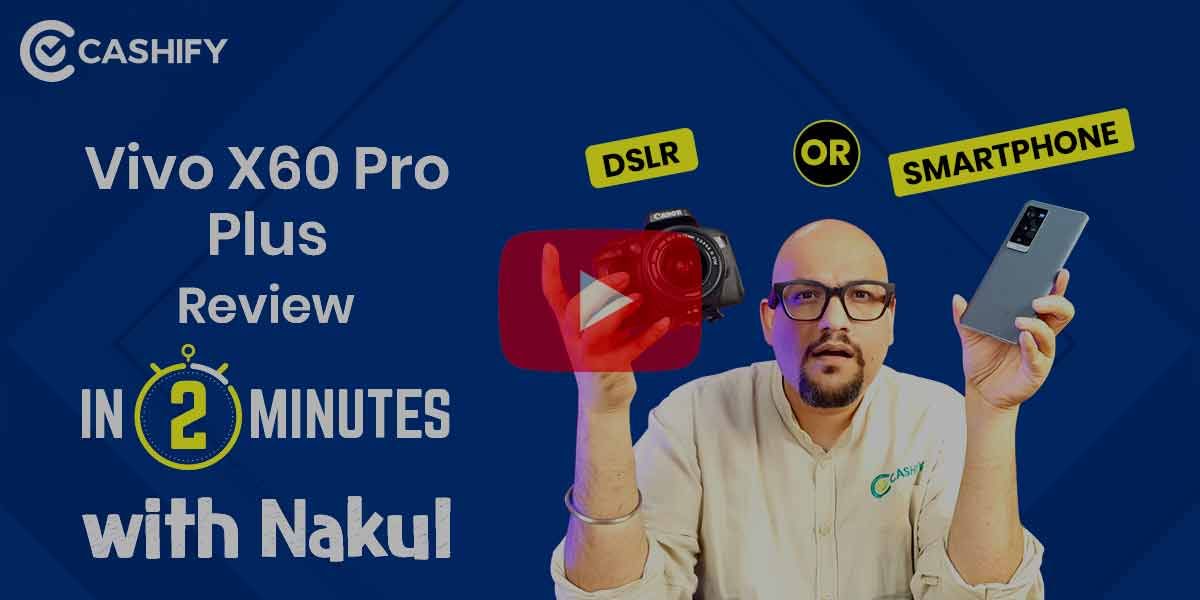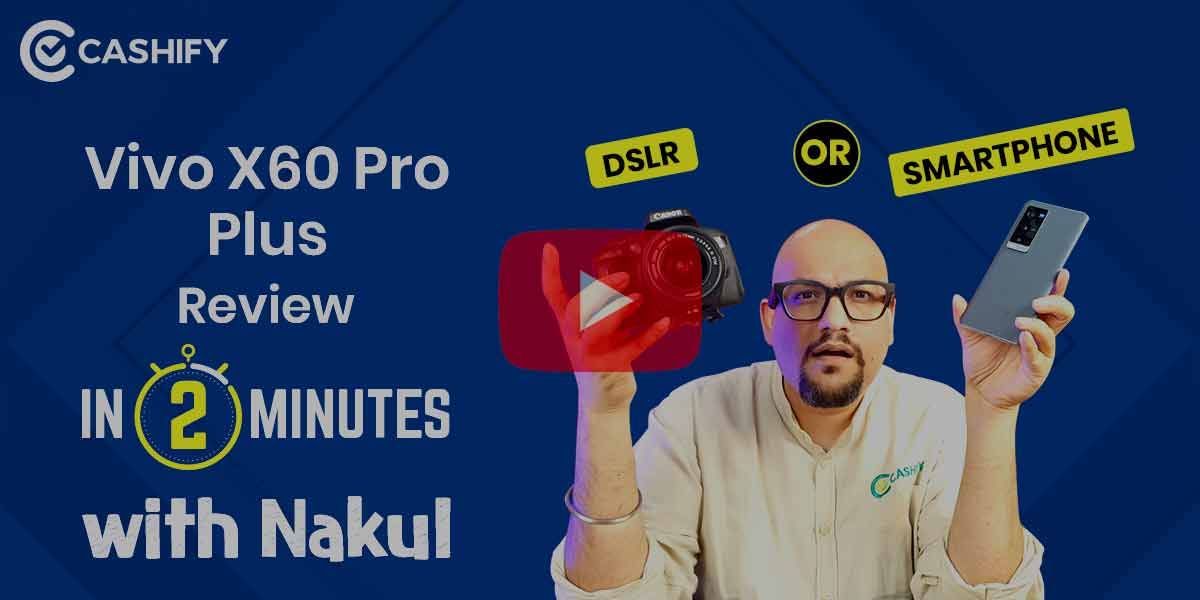Introduction
Vivo launched several smartphones last year and started with S1 Pro this year as the successor to Vivo S1. Although the phone has specifications on-point, there are a lot of things that have changed with the successor available in India now. It is different than the Vivo S1 Pro model launched in China, so this is particularly a global variant and does have a tonne of pros and cons to showcase.
Prices in India, Variants, Availability
Vivo S1 Pro was launched as a staple of style, the phone is indeed impressive and worth a try although it does have a few backlogs that you need to know. The device is available in Dreamy White, Jazzy Blue, and Mystic Black. Available in 8GB+128GB storage, the phone is available at a price tag of Rs 19,990/-.
The device has 1 year of warranty while the accessories carry 6 months of warranty and are available for purchase through India.
Read also: Motorola’s Foray Into Stylus Phones Leaked
Box Contents
Talking about the retail box the phone comes with, it is sleek and comes with a few accessories. It includes the phone itself, a SIM ejector tool, quickstart manuals, a TPU case, 3.5mm headphones, a USB Type-C cable, and an 18W Dual Engine Charging adapter.
Specs at a Glance
The phone runs on Qualcomm Snapdragon 665 SoC made on 11nm node. It is eight-core with four 2.0 GHz Kryo 260 Gold high-performance and four 1.8 GHz Kryo 260 Silver power-efficient cores. It has an Adreno 610 GPU that aids in its graphics for intensive gaming and multitasking all without the frill of lagging. The phone has a single 8GB plus 128GB variant and supports microSDXC memory card to expand its storage further.
The phone also has a tonne of sensors like any midrange that includes a compass, proximity, gyroscope, accelerometer and an in-display optical fingerprint scanner on the lower section of the display.
Design and Build Quality
I must say Vivo has done something different with the device, and it stands out when it comes to its design. At the front, the phone isn’t different from its predecessor Vivo S1. Note that the Vivo S1 Pro in China is different than the global version.
Talking about this phone, it does have a large screen which means the phone is pretty big, however, holding it is comforting and it fits right in your hands even if you have small hands for that matter. The front has tiny bezel and chin while the rear is something you will be excited, to be honest. Unlike other smartphone manufacturers that either has vertical or horizontal strip as real camera assembly or are resorting to circular or rectangular camera bump, Vivo S1 Pro has a diamond-shaped rear camera setup that sits just above the back panel.
The back panel is not glass but rather a polycarbonate panel with a beautiful gradient 3D-like colour finish that makes the device look premium and rich. Anyone could misunderstand it as a premium flagship smartphone, to be honest. With that being said, the device has no active Gorilla Glass protection so dropping it might not be a good idea in case if you decide to play with it.
The phone does have several pros when it comes to its design such as it is quite ergonomic. At 186g, the phone is well-balanced and feels light in your hands even though it is storing a humongous 4,500 mAh battery under the hood so that’s commendable and that’s something Vivo achieved by using a light-weight aluminium frame with it. Another zing of design elements added to the phone is the ting of red accent on the power button, which is similar to Google Pixel 4 and yet, it adds to its overall look and appearance.
The top edge has a 3.5mm headphone jack and a noise-cancelling secondary mic. At the bottom, we have a speaker grille, a mic, and a Type C USB cable for faster charging and data sharing. The left has a hybrid SIM Card slot on the top while the right edge has volume rockers and an accented power button.
Display
When it comes to the display, the Vivo S1 Pro offers a 6.38-inch Super AMOLED display with an aspect ratio of 19.5:9, 404 PPI density and 1080×2340 pixels. These, in my opinion, are great figures for a sub-20K price tag and in fact, these specifics are more than enough even for a moderate user.
Thanks to its Super AMOLED display, I can say that the display is rich and vibrant and produces punchy colours on the go. The display is far richer than that of Realme X2 although the device does tend to lag to Realme X2 in other aspects. The colour calibration set as default is pleasant although you can change it as per your needs. The phone doesn’t have an LED notification light which means you will have to stick to an Always ON display to get notifications.
Further, the phone doesn’t offer Corning Gorilla Glass at the front and the back. However, the Chinese smartphone manufacturer has implanted a Schott Xensation 3D glass and a pre-loaded screen protector, so the display has some degree of protection.
The phone has tiny bezels on both left and right while the chin is not too thick but on point with its price range. Also, it has a U-shaped notch right on the centre of the top bezel. You get a phone with a tall display for a wonderful viewing experience with this colourful display on-board. The colours are true to life with darker blacks and brighter whites that also help in viewing the screen during bright sunlight, although you might need some help view the screen if it’s too bright outside. A brighter display wouldn’t have made viewing on sunny days easier.
Read also: Tips To Capture Great Smartphone Pictures
Performance
You already read that the phone has Qualcomm Snapdragon 665 SoC under the hood. The processor along with the GPU on-board and 8GB of RAM tends to handle everything without any hassle. We didn’t see any lag or flicker during multitasking between the apps so even if you have open 10 apps at once and if you are scrolling through them, the processor is equipped with the beef to handle it.
On the other hand, the processor does perform fairly well when subjected to heavy usage such as gameplay of PUBGM at Balanced settings wouldn’t cause must strain on the processor. Yes, playing for a long time would drain the processor as well. Moreover, the thing with S1 Pro’s SDM665 processor is that it is a letdown because the phone is priced at the sub-20K category and should have arrived with at least a 700-series processor from Qualcomm.
Software
Vivo S1 Pro runs on Android 9 Pie-based FuntouchOS 9.2 which is refined and clean compared to its previous iterations. One of the best things here is that the phone doesn’t have much bloatware and once you have can be removed (at least some of them). Further, the UI has gestures and buttons for navigation and a system-wide Dark Mode is enabled as well.
Like Oppo, Vivo too has a notification pane for notifications and an Easy Touch that can be brought up on display by swiping up from the bottom. Talking about the OS on Vivo S1 Pro, it is well-optimized so that’s a relief. The UI is a bit confusing for first-time users but it tends to have a lot that you can use. The phone offers various modes like Kids Mode, Motorbike Mode, Ultra Gaming Mode and others for usage. Overall, the phone does have a built-in 128GB storage of which, 115GB is available for your usage which is a decided amount of storage even if you are a hardcore memory-philiac.
Cameras
What’s the first thing you would notice on Vivo S1 Pro when you see it? It’s definitely its rear diamond-shaped camera setup which includes 48MP AL Quad-camera assembly. It includes a 48MP primary sensor with 0.8micron pixel size, PDAF, f/1.8 aperture and a sensor size of 1/2.0” followed by a secondary 8MP ultrawide sensor with a 13mm focal length, 1.12micron pixel size, f/2.2 aperture, and 1/4.0” sensor size. This is again followed by a third dedicated macro camera of 2MP with an aperture of /2.4, 1.75-micron pixel size and 1/5.0” sensor size and the same specifics goes to the fourth depth sensor.
Talking about the camera performance, I must say it is average or a bit above average if you are coming from a flagship device but definitely a huge bonus if you are upgrading. The 48MP primary sensor captures rich details in higher dynamic range and colours are saturated and pop up to create wholesome punchy coloured images. The phone’s camera app tends to have many features which is the USP of any Vivo phone. The colour reproduction as said is not accurate although the images are short. The portrait images also employ depth sensors to have proper edge detection so yes, the portrait for both front and back cameras is good. The macro camera does perform above average as well. Finally, the 108° wide-angle camera tends to shoot a full shot which is reasonably decent in day-light conditions.
Low light photography on Vivo S1 Pro is also good although you would need to flash instead of relying on the phone’s post-processing to get closeups. Overall, the camera on S1 Pro is not as impressive as that on Realme X2 which is one of its many rivals in the same price tag.
Vivo S1 Pro cannot shoot videos at 4K resolution and thus, can be scaled up to 1080p at 30fps and has an Electronic Image Stabilization on-board that does work as per its capability but overall, the videos are decent as well.
The front, on the other hand, has a decent 32MP sensor with 26mm focal length, f/2.0 aperture, a pixel size of 0.8micron and sensor size of 1/2.8”. It can grab decent photos in well-lit conditions as well.
Battery Life
Coming to one of the most crucial aspects of the phone, its battery. With a phone high in performance but low in battery life, it isn’t a match I would consider if I am a power user who relies on my phone and wants it to have longer battery life and balanced powerful if not the most powerful device on Earth.
Vivo S1 Pro sports a 4,500 mAh battery under the hood which is large enough to last for at least one and a half days on light to moderate usage. Even if you are using it thoroughly, I don’t think it will discharge quickly and would still give you a backup of around 10-12 hours on heavy usage.
In fact, the battery pulled off 16 hours of continuous HD video on loop when tested, so I am not wrong when I said the phone does have great battery life. Moreover, the phone has an 18W Dual Engine Charger which is capable of filling up the battery to its capacity in just two hours which may not be the best stats to have but it is still impressive.
Audio and Security
Talking about security, you can expect S1 Pro to have the upper hand on it. The phone sports an optical under-the-display fingerprint scanner which according to me registers quickly and gives you access to the phone in a jiffy. It barely takes a second to detect and unlock while keeping intruders out. Next up, it also has a Face Unlock feature which is pretty good in both bright lighting conditions as well as low light conditions. The feature tends to keep freeze if you close the eyes and it won’t unlock if you have registered your face with it so I can say that it is pretty secure.
The phone has a loudspeaker so audio will never be a problem and the same goes for its video performance so multimedia is its scoring suite.
Pros and Cons
Pros:
Large battery & longer battery life
Brilliant sAMOLED display
Reliable Face Unlock & In-display Fingerprint Scanner
Cons:
Average performance
Average camera performance
Polycarbonate back panel
You are about to buy a phone that carries a price tag of Rs 19,990/- excluding any offers and deals you will get. Vivo S1 Pro, to be honest, has one of the best phone designs thanks to its accented power button and diamond-shaped rear camera which isn’t something you would find on other smartphones.
The phone does have a lot of pros including its super punchy AMOLED panel and a humongous battery life that will keep you going for hours. It has an older processor which sets it behind in terms of performance when compared to its rival like Realme X2 that has Snapdragon 730 SoC. I must say that if you are okay with decent camera performance, you can go for it especially if you are upgrading from Vivo S1 or any other phone running with either Mediatek or Snapdragon process below SDM665.
Finally, the phone doesn’t have a back glass either for aesthetics or protection so you have a polycarbonate panel which is although not bad, it isn’t glass which is also a trend nowadays. So, what do you think about Vivo S1 Pro after reading this review?






























